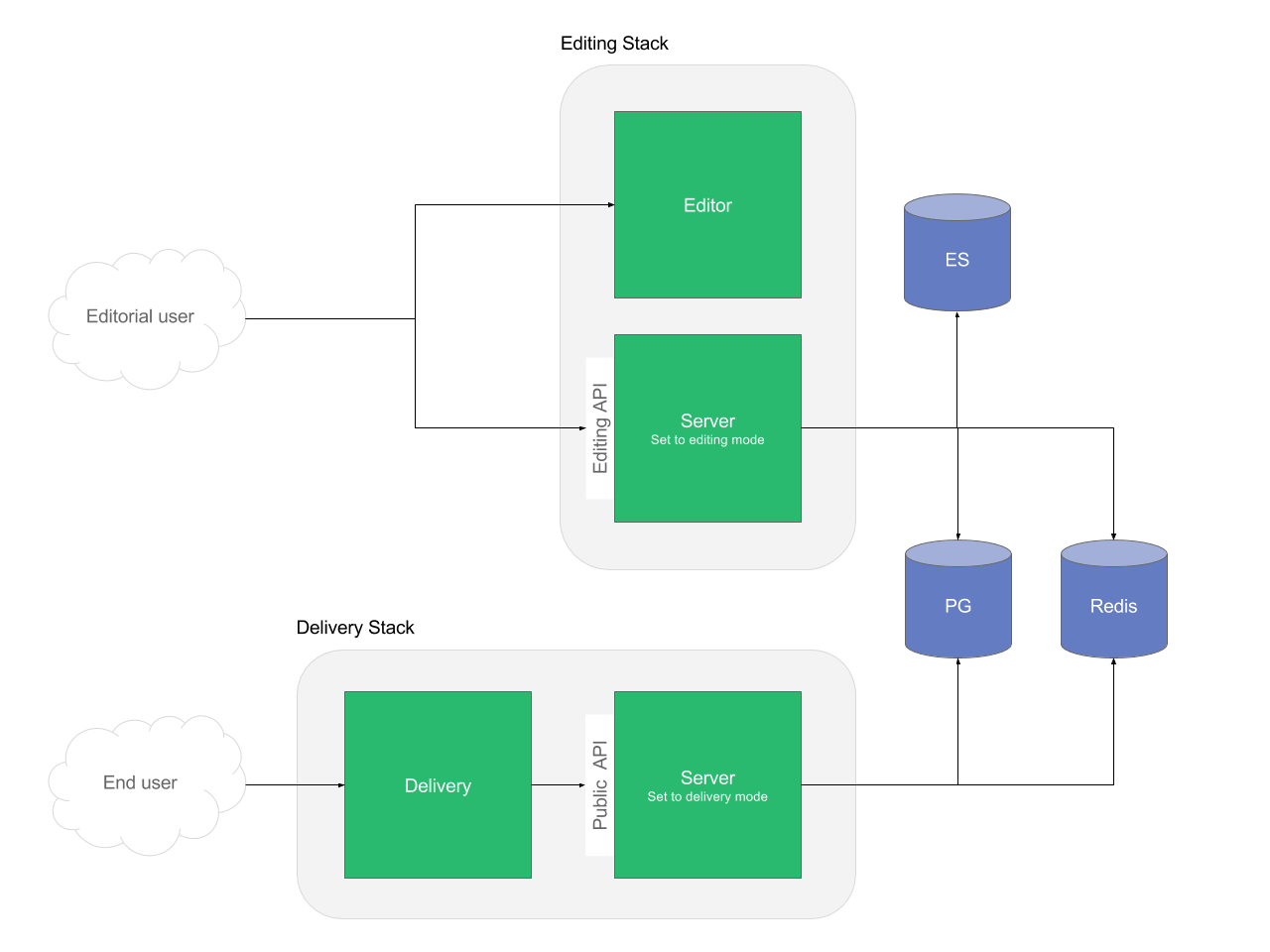Architecture diagrams source files can be found on google drive

Stacks
On a high level, Livingdocs can be divided in two different stacks. These stacks can be scaled independently from each other, depending on the requirements.
- Editing stack: Services allowing the editorial user to write content in a web interface and persisting it. The content is made accessible to the delivery stack.
- Delivery stack: Services allowing the end user to read the content on the website or mobile application.
Applications
- Editor: A single page application serving the editors web interface. It consists of static assets only. This is where the editorial user logs in and writes content.
- Server: A node.js application. It can be started in two different modes:
- In editing mode, it acts as the backend for the li-editor, storing content, handling file uploads, cropping, authentication and so on. It does expose a REST API for the li-editor to connect to.
- In delivery mode, the purpose of it is to provide a REST API for the delivery to present the content to the user
- Delivery: A node.js application. Makes content written in Livingdocs available to end users. Its primary purpose is to render a website.
Services
- Postgres (PG): Primary data store for the server. For example pages, articles, menus, users are persisted here. Both servers in delivery, as well as servers in editing mode access the same data.
- Elasticsearch (ES): The editor provides the user with a search, powered by an Elasticsearch secondary index. Only servers in editing mode need access to this service.
- Redis: Key value store for the server. Used by specific features for queuing and caching. Depending on the feature set you are using.